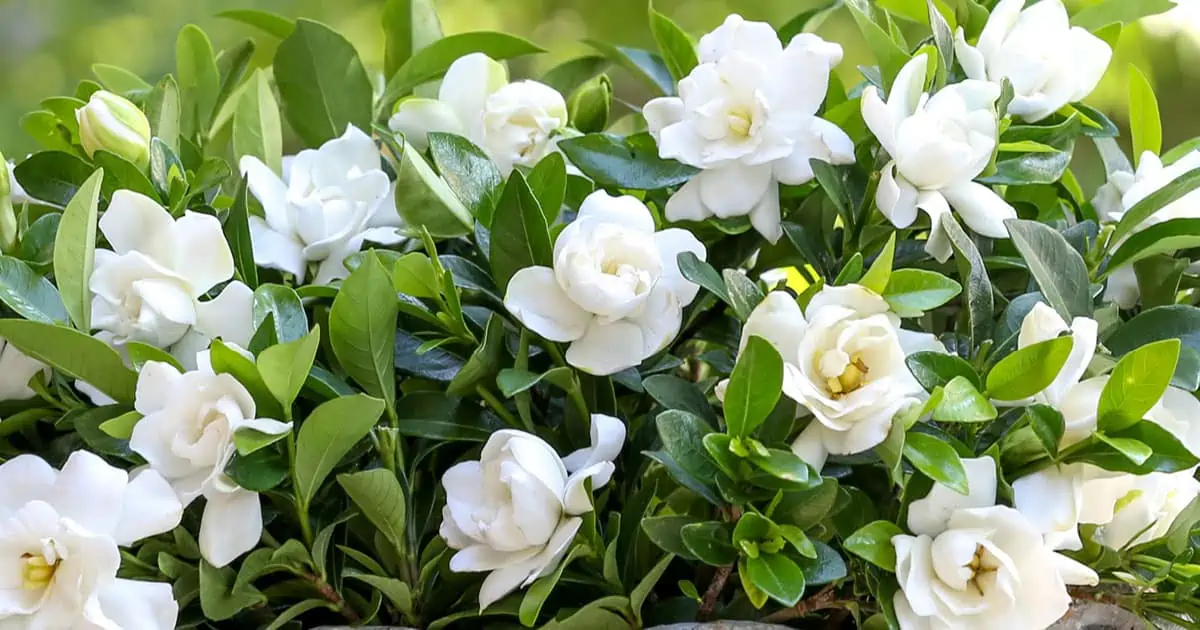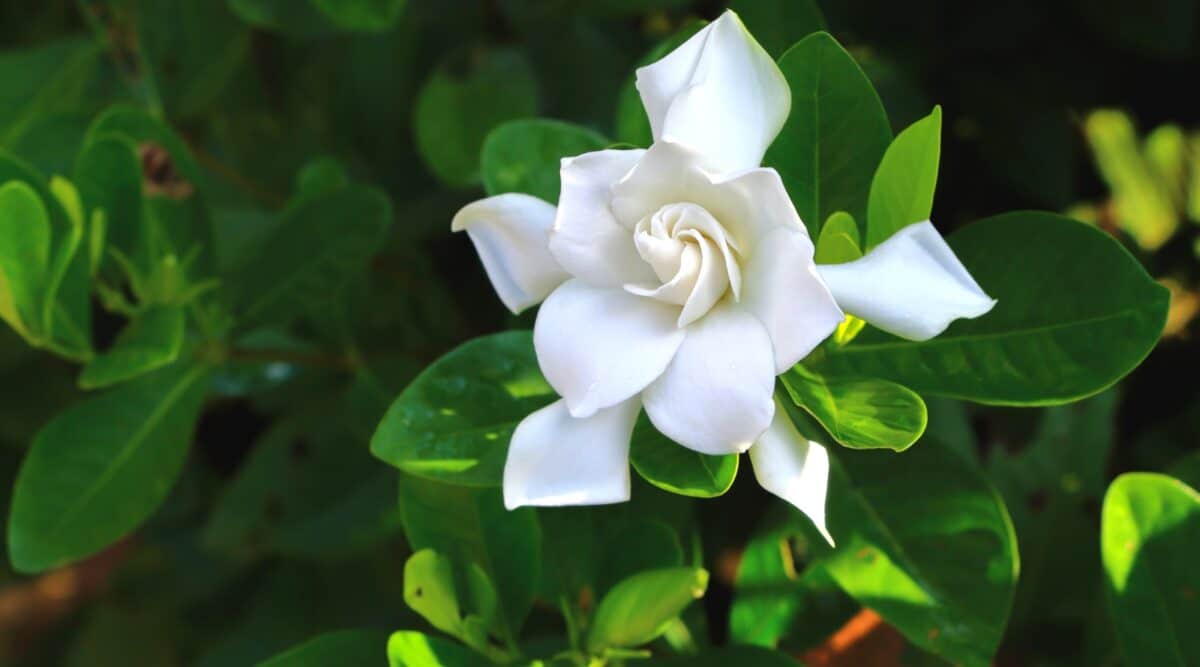Looking for a way to make your gardenias bloom with vibrant color and delectable fragrance? You’re in luck! Our complete guide covers all the tips and tricks you need to fertilize your gardenias and promote lush greenery and blooming beauty.
This guide provides an overview of the basics of fertilizing gardenias in a variety of climates, from the temperate Southern United States to the arid desert Southwest. We will cover the types of fertilizer best suited for gardenias, how and when to apply it, and how to assure that your gardenia plants receive the right amount of fertilizer. You will also learn about organic methods for feeding your plants and preventing nutrient deficiencies. By following this guide, you can make sure that your flowers are lush and fragrant blooms each year.
We begin by discussing why it is essential to provide adequate nutrients for your gardenias with a suitable type and amount of fertilizer. Your plants must be able to convert soil nutrients into usable forms of food, which gives them energy for growth. Different plants need different types of fertilizer depending on their individual needs; thus an understanding of soil composition is helpful in choosing the correct type for your gardenias. Additionally, we will discuss factors such as time of year, as well as application methods including top-dressing or side-dressing soils with fertilizer prior to planting or mulching each season. Finally, we will highlight some reasoning behind using organic versus inorganic fertilizers so that you can make an informed decision about what is best for your particular plants’ needs.

Best Fertilizers for Gardenias
Gardenias are beloved for their lush foliage and fragrant white blooms, but in order to keep them thriving, they need the right fertilizer. When it comes to finding the best fertilizer for gardenias, there are many things to take into consideration. It’s important to assess your Gardenias’ specific needs in terms of sunlight, soil type and moisture requirements. Depending on these factors, the best fertilizer for your Gardenia may vary – but all gardeners should keep an eye out for products that contain nitrogen and other mineral nutrients like phosphorus and potassium that are essential for vigorous growth. Common types of necessary fertilizers include slow-release granular formulations or liquid concentrates that can be mixed with water and sprayed onto the foliage as a foliar feed. When applying any type of fertilizer, always take precautions to avoid overfeeding as this can burn the plant or grassy areas around it.
Organic fertilizers may be preferable as they tend not to release nutrients all at once like synthetic counterparts can, instead providing a steady stream of nutrient enrichment over several weeks or months. Mixing compost into your soil is another great way to provide essential micronutrients like manganese, iron and magnesium which helps create vigorous plants with lush green coloration that perform well under stress conditions.
Ultimately selecting the best fertilizer for gardenias will depend on each individual gardener’s needs – but always consider what you believe is best for your Gardenia’s environment before deciding on the product you’ll use.
Nitrogen, Phosphorus, and Potassium (NPK) Ratio
The balance of elements in fertilizer is expressed as the % Nitrogen (N), % Phosphorus (P), and % Potassium (K) contained in the product. This ratio is known as N-P-K or “NPK” and is indicated numerically, such as 10-5-5 or 6-12-6. Improper selection of fertilizer can cause poor growth and even death of a gardenia, so it is important to understand the role each element plays.
Nitrogen promotes green, leafy growth and helps to maintain healthy color of foliage. A good NPK fertilizer for gardenias will contain more nitrogen than phosphorus or potassium for lush, green foliage growth and strong stems.
Phosphorus aids in overall plant health including increased flowering, root development and disease prevention. It also helps to maximize energy from photosynthesis and aids with blooming periods. Good ratios include slightly more phosphorus than nitrogen but less than potassium.
Potassium contributes to frost protection as well as plant stress resilience during hot temperatures – essential in warm climates – but it may produce large leggy plants without flowering if used excessivelyIt should be used sparingly in a good NPK fertilizer recipe for gardenias (e.g., 5-10-7).
Other essential nutrients

It’s important to note that besides macronutrients like nitrogen, phosphorus, and potassium there are other essential nutrients necessary for healthy gardenia plants.
Magnesium is an important ‘secondary’ nutrient. It is needed in relatively large quantities and directly affects the chlorophyll formation process necessary for plants to produce sugars from sunlight. Magnesium also helps to activate several enzymes needed during photosynthesis. Gardenias require 3-5 pounds of magnesium sulfate per 100 square feet of planting area.
Calcium is another secondary nutrient important for gardenias. It helps to regulate nutrient uptake and aids in cell wall structure maintenance throughout the plant life cycle. Calcium can be added to soil as lime or gypsum at a rate of 1-3 pounds per 100 square feet of planting area when preparing new beds or when it becomes clear that soil calcium levels are suboptimal (pH > 7).
Iron, manganese and zinc are ‘micronutrients’ found in small amounts but still essential for plant growth; iron plays an essential role in photosynthesis-related activities, manganese helps catalyze processes involved in the formation of chlorophyll and zinc is necessary for shoots to form properly. These micronutrients can be added at a rate of one teaspoon per 10 square feet as chelated iron, or one teaspoon split between manganese and zinc sulfates as needed after annual soil analysis results become available.
pH level
The pH of the soil where you plan to plant gardenias should be between 5.0 and 6.5 in order for the plants to flourish. Any lower or higher than this creates an inhospitable environment for these acid-loving plants and any fertilizer used must take into account the current pH level of the soil.
Fertilizers formulated for gardenias usually include sulfur or iron to help maintain an ideal acidity level in order for plants to reach their full potential. A soil test is recommended before adding any type of fertilizer, as it is vital that you know your starting point so you can ensure healthy growth and optimal results throughout a gardenia’s life cycle.
How to Apply Fertilizers to Gardenias
Applying fertilizers to gardenias is essential to maintaining the health of your plants. This guide outlines the best times to fertilize and provides step-by-step instructions for successfully feeding your gardenias.
When To Fertilize: To promote lush greenery and fragrant blooms, fertilize your gardenias regularly. Gardenias are best fertilized in early spring (just after new growth appears), midsummer, and fall when active growth resumes after flowering.
How To Fertilize: 1. Water the soil around your gardenia plants before applying fertilizer to reduce chances of burning the roots with concentrated fertilizer salts.
- Use a well-balanced fertilizer specifically formulated for acid-loving plants during each of the three feeding times throughout the season – early spring, midsummer, and fall – about one month apart for each feeding time (every two months total).
- When fertilizing, follow recommendations on container label for rate of application and spread evenly around base of plant between trunk and outer edge so as not to contact foliage or stems directly which could result in burning foliage due to direct contact with fertilizer salts.
- For continuing health and vigor, apply a thick layer of organic mulch around base of plant (be sure not to pile up mulch too high up against trunks). This will help retain moisture levels in soil which aids uptake of nutrients by roots plus helps suppress weeds which could compete with plants for available moisture/nutrients in soil.
Timing of application

Once you have selected the fertilizer for your gardenia, it is important to time its application correctly. Gardenias typically require more fertilizer during their spring and summer months when they are actively growing. Typically, feeding from March through September will yield the best results. Apply the fertilizer when stems are at least 6 inches long, as this ensures that nutrients reach the roots in a timely fashion.
Application can be done either around each individual gardenia or across the entire bed with a broadcast spreader. Spreader setting and amounts should be based on soil type, weather conditions and overall health of the plants. If you apply through a spreader, keep in mind that hardwood mulches or organic fertilizers may work better if they are mixed into softened organic matter prior to applying them as an even spread around your gardenias.
When using liquid fertilizers or bleaching agents like common household vinegar or lemon juice, be sure to use them sparingly around gardenias only when necessary since these substances could damage delicate leaves or blossoms.
Amount of fertilizer to apply
The amount of fertilizer you apply to your gardenias is critical to providing the best plant health and promoting lush greenery and fragrant blooms. When determining how much fertilizer to apply, the type of soil in your garden, the age of the plants and the intended purpose of the fertilizer should all be taken into consideration.
For established gardenias in fairly nutrient-rich soil, fertilize only every six to eight weeks with a high potassium balanced 10-10-10 fertilizer. The concentration of nitrogen, phosphorus and potassium should be roughly equal to create a balanced formula. A general rule of thumb is one tablespoon for every four square feet of soil. Apply this amount in bands around the root zone so that the fertilizer does not touch any foliage or stems.
For young gardenias that are less than a year old, apply a half-dose every four weeks until they reach their mature size, then switch to every six to eight weeks with an equivalent rate as always described before. Also note that if you’re adding compost or manure to supplement nutrient levels in your soil before planting new gardenias, it can mimic some effects of fertilization and can reduce how much additional fertilizer is required for those plants.
Placement of fertilizer

The placement of fertilizer for gardenias is key to promoting lush greenery and abundant fragrant blooms. Ideally, fertilizer for gardenias should be placed about two inches away from the base of the plant to reduce the chance of root burn. Spread half or all of the recommended rate in a 12-inch circle around the stem about two inches away and water thoroughly. Scatter the remaining fertilizer over this same area or water in lightly if granulated product has been used.
In order to prevent ammonia from coming in contact with foliage, carefully avoid contact with leaves and flowers when applying granular fertilizer. It is also important to remember to not overapply because too much nitrogen can lead to leaf burn or – even worse – death of your beloved gardenias!
Tips for Promoting Lush Greenery and Fragrant Blooms
To maximize blooms and lush foliage in your gardenias, it’s important to use the right fertilizer. Make sure that you choose a fertilizer that has an adequate amount of phosphorous, potassium, and nitrogen. These three essential macronutrients help promote healthy roots, vibrant green leaves, large buds and abundant blooms.
When fertilizing gardenias, use a slow-release fertilizer according to package instructions for best results. It’s important to water your gardenia after fertilizing for growth and health promotion. Watering helps the fertilizer penetrate into soil and root beds (where it does the most good) rather than running off of the surface.
In addition to using quality fertilizer tailored to the soil type in your area, make sure you trim away old or dead blossoms after flowering season is over. This will encourage new shoots and larger buds come next season! Gardenias are known to sometimes suffer from iron deficiencies in their leaves; adding iron-rich products will help correct this issue if you observe any yellowing foliage or wilting plants in your yard.
Proper watering
In order to promote lush greenery and fragrant blooms, gardenias need to be watered properly. Watering should occur deeply, so that the water reaches the root level of the plant. Generally, gardenias require about 1-2 inches of water per week during normal weather with occasional deeper soaking during extended periods of hot weather.
Proper watering creates an ideal environment for the fertilizer to work most effectively. Water needs will depend on individual atmospheres and climates — but always ensure that the soil around your plants is not overly wet or dry before applying fertilizer.
Pruning
Pruning is an essential part of caring for gardenias, as it enables you to help the bush maintain its shape and also encourages new growth. Pruning encourages stocky, dense growth and improved air circulation, which helps to prevent disease issues and pest infestations.
Prune gardenias in the late winter or early spring when they’re still dormant – faded blooms may be removed any time after mid-summer. Begin pruning by removing dead or diseased branches immediately and then shape the plant, removing errant branches that appear to grow outside of the main shape of the bush. Heavier pruning should be done as needed, preferably not more than a few times per growing season. Gardenia varieties that flower during winter should only be pruned in spring or summer if needed after flowering completes.
Pest and disease control
Gardenias require proper care in order to produce lush greenery and fragrant blooms. To maintain strong and healthy plants, pests and diseases should be managed proactively. Some of the most common pests you may need to address include aphids, mealybugs, mites, thrips and scale insects. In addition, various fungal or bacterial infections such as powdery mildew or blight may cause discoloration or deformation of leaves.
To effectively identify what type of pest or disease is attacking your gardenia plants, you will need to conduct proper research for accurate diagnosis. Once the problem has been identified, be sure to follow concerned professional tips for yard maintenance which can help prevent a situation from reoccurring.
Spraying your garden with an organic insecticide on a regular basis throughout spring will help provide protection from most common pests and insects. A good alternative is to use beneficial insects such as ladybugs that feed on insect larvae known for damaging gardens. And if fungi are the cause of problems in your gardenias, reduce moisture content by improving aeration around your plants using cutting back long branches or installing an oscillating fan near infested ones.
Conclusion
To make your gardenias thrive, use an appropriate fertilizer for the pH level of your soil and feed during the growing season. If you need to adjust your soil’s pH, use dolomite lime to make it more alkaline.
Once you’ve established ideal soil conditions and applied fertilizer, be sure to provide water regularly when needed, as well as protection from harsh weather.
With proper care, your gardenias will be lush with dark green foliage and fragrant blooms.
FAQ’s
What is the best fertilizer for gardenias to bloom?
Fertilizers that are high in phosphorus and potassium are the best for gardenias to bloom.
What is the best granular fertilizer for gardenias?
Granular fertilizers that have an NPK ratio of 8-12-8 or 10-10-10 are the best for gardenias.
How do I make my gardenia greener?
To make your gardenia greener, you can apply a nitrogen-rich fertilizer, such as blood meal or fish emulsion, and ensure that the plant is getting enough sunlight and water.
What is the best NPK for gardenias?
The best NPK ratio for gardenias is 8-12-8 or 10-10-10, with a higher amount of phosphorus and potassium for blooming.
What is a natural fertilizer for gardenias?
Organic fertilizers such as compost, bone meal, and fish emulsion are natural fertilizers that can be used for gardenias.
Which NPK boosts flowering?
Fertilizers with a higher amount of phosphorus and potassium, such as those with an NPK ratio of 8-12-8 or 10-10-10, are known to boost flowering.
Which nutrient encourages flowering?
Phosphorus is the nutrient that encourages flowering in plants.
Which one is better NPK or DAP?
NPK fertilizers are better for overall plant growth and health, while DAP (diammonium phosphate) is a type of phosphorus fertilizer that can be used to promote root growth and flowering.
What is the best flowering nutrient?
Phosphorus is the best nutrient for flowering, as it helps to promote the growth and development of flowers.
Which hormone is best for flowering?
Plant hormones such as auxins and cytokinins can help to promote flowering in plants, but their effectiveness can depend on the specific plant species and growing conditions.
See Also :
- Best fertilizer for zoysia grass 2023
- Best liquid fertilizer for lawn 2023
- Best orchid fertilizer 2023
- Best palm tree fertilizer 2023
- Best pumpkin fertilizer 2023


